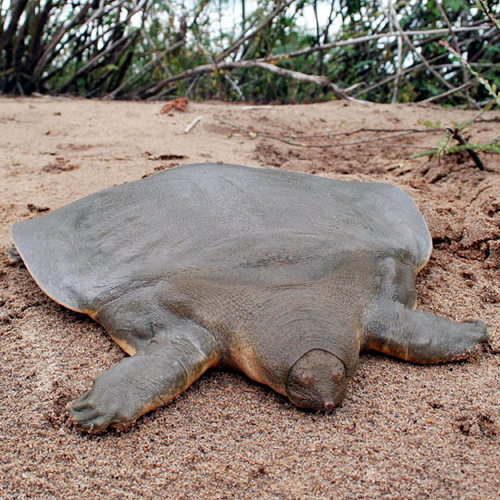Facts About Cantor's giant softshell turtle
The Asian giant softshell turtle, also known as Cantor's giant softshell turtle or the frog-faced softshell turtle, is a freshwater species indigenous to Southeast Asia. Recognized as one of the largest freshwater turtles globally, it is unfortunately endangered, having disappeared from many former habitats.
Scientifically named Pelochelys cantorii, this species stands out among its genus due to its absence in New Guinea. Research suggests that what is currently classified as Pelochelys cantorii may encompass several distinct species, as turtles from various regions exhibit significant morphological differences.
These turtles are easily identified by their broad heads, small eyes, and smooth, olive-colored shells. They are primarily carnivorous, feeding on crustaceans, mollusks, and fish. Although some reports claim they can grow up to 1.8 meters long, most individuals measure between 70 and 100 cm.
Regarding habitat, the Asian giant softshell turtle favors slow-moving freshwater rivers and streams across several Southeast Asian countries. They can also be found in coastal areas.
The species is listed as Endangered by the IUCN, attributed to decreasing populations and dwindling habitats. Conservation efforts are actively underway, including surveys to monitor their populations in specific areas.
In the Philippines, a juvenile Cantor's turtle was captured and sent to Chicago for evaluation, highlighting the critical need for conservation initiatives. The Zoological Society of London has also recognized this turtle as an EDGE (Evolutionarily Distinct and Globally Endangered) species, emphasizing its unique status in the animal kingdom and the urgent necessity to protect it.

 Myanmar (Burma)
Myanmar (Burma)